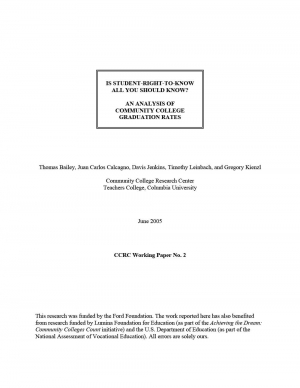
Over the last decade, policymakers, educators, and researchers have increasingly sought to understand community college policies and practices that promote students’ success.
The research reported here has two related goals. One goal is to work towards strengthening the ability to assess and compare institutional performance. The authors thus have developed a model that can be used to adjust simple graduation rates for institutional characteristics, such as student composition, college resources, size, and location, all of which might influence those rates. The long-term goal is to understand how to improve student outcomes, so the paper also uses the model to measure the effects of those institutional characteristics on graduation rates. The authors use data from the Integrated Postsecondary Education Data System (IPEDS) surveys, applying a weighted least-squares procedure for grouped data to estimate an institutional completion rates model.
This analysis confirms several hypotheses about institutional determinants of graduation rates at community colleges. The results indicate a consistent negative relationship between enrollment size and completion. Additionally, colleges with high shares of minority students, part-time students, and women have lower graduation rates. A final significant finding among institutional characteristics is that greater instructional expenditures are related to a greater likelihood of graduation. The method developed here can be used to better assess the performance of community colleges.
A version of this working paper was published as an article in Research in Higher Education, vol. 47.
A brief of this paper, Beyond Student Right-to-Know Data: Factors That Can Explain Community College Graduation Rates, is available for download.
